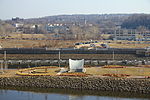St. Paul Pioneer Press
The St. Paul Pioneer Press is a newspaper based in Saint Paul, Minnesota, United States. It serves the Minneapolis–Saint Paul metropolitan area. Circulation is heaviest in the east metro, including Ramsey, Dakota, and Washington counties, along with western Wisconsin, eastern Minnesota and Anoka County, Minnesota. The paper's main rival is the Star Tribune, based in neighboring Minneapolis. The Pioneer Press has been owned by MediaNews Group since April 2006. It no longer includes "St. Paul" as part of its name in either its print or online edition, but its owner still lists the paper's name as the St. Paul Pioneer Press and the paper also calls itself the St. Paul Pioneer Press on its Facebook and Twitter pages. Its URL and digital presence is TwinCities.com.
Excerpt from the Wikipedia article St. Paul Pioneer Press (License: CC BY-SA 3.0, Authors).St. Paul Pioneer Press
River Park Plaza, Saint Paul West Side
Geographical coordinates (GPS) Address Website Nearby Places Show on map
Geographical coordinates (GPS)
| Latitude | Longitude |
|---|---|
| N 44.942647 ° | E -93.083415 ° |
Address
Comcast
River Park Plaza
55146 Saint Paul, West Side
Minnesota, United States
Open on Google Maps











